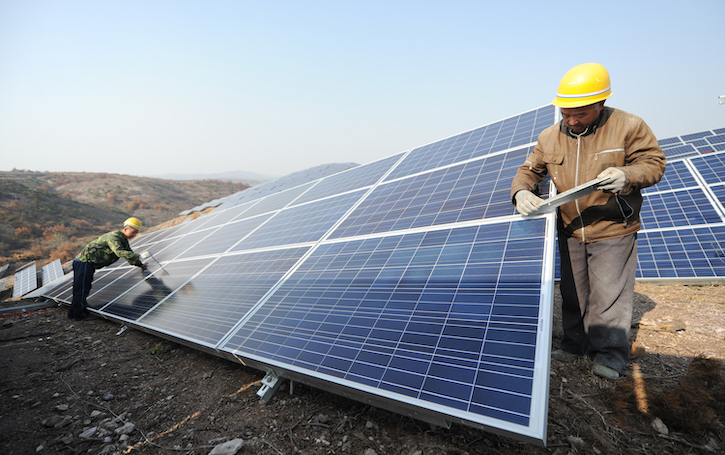
By Karen Weigert
The Obama administration’s stalled effort to regulate carbon emissions from power plants, the Clean Power Plan, was back before the courts on Tuesday. Even if it survives the process, the Clean Power Plan and the United States may miss a chance to catch up with China, which is building a transformative platform set to dominate global carbon markets.
In 2014 the United States and China made a bilateral announcement on their commitments to carbon reduction, paving the way for the Paris Agreement. The Clean Power Plan anchors the U.S. commitment, with a goal to reduce carbon from the electricity sector 32 percent by 2030.
Thirty-two percent may seem daunting, but a shift from coal to natural gas and renewables has already pushed carbon emissions down 21 percent from baseline 2005 levels. PJM Interconnection, one of the nation’s largest operators of the electrical grid, analyzed the Plan and concluded it can accommodate the effort with no impact to reliability and minimal impact to price. States are obliged comply with the Clean Power Plan individually, and the majority are on track to meet the first targets in 2022.
While this is good news for carbon emissions now, it raises questions for the long term. If states believe they can meet their goals independently, they may not build interstate mechanisms for trading emissions credits. Creating a national platform for emissions credit trading is what could put a national price on carbon and eventually transition the United States beyond fossil fuels.
In contrast to the Unites States, China is actively creating a national market for trading carbon emissions. After piloting carbon markets in seven different cities and regions, China is poised to launch its national cap-and-trade system in the next few months.
China’s carbon market will soon be the largest in the world, with potential for global growth. Not only will China use this market to meet its Paris Agreement pledge, it may be positioned to partner with approximately 90 other countries that included a price on carbon in their Paris commitments.
Is it too late for the United States?
The state-led Clean Power Plan does provide a way in. California, the first state to release a draft of its implementation plan, will use its existing cap-and-trade system to meet its goals. Other states, in drafting their plans, could also ensure their approaches are “trading ready.” Even stronger, they could collaborate to join existing trading systems like California’s, or that of the nine eastern states that participate in the Regional Greenhouse Gas Initiative.
Beyond the Clean Power Plan, the absence of a national platform and policy creates an ambiguous planning environment. Increasingly, companies are taking matters into their own hands. The latest data from CDP (formerly the Carbon Disclosure Project) shows over 500 companies globally had an internal price on greenhouse gas emissions in 2016, a 19 percent increase over 2015. Almost 700 more say they are planning to use one in the next two years.
The core of the Clean Power Plan is the argument that carbon is a pollutant, one that needs to be regulated and reduced. Countries and companies increasingly agree. The question is whether the United States can use tools like the Clean Power Plan to play a meaningful role in the global markets that result.
This piece was created in collaboration with the Chicago Council on Global Affairs and was originally published on Real Clear World. Karen Weigert is a senior fellow on global cities at the Chicago Council. She served as the First Chief Sustainability Officer of the City of Chicago from 2011 to 2016. She is on Twitter @KarenRWeigert. All views are the author’s own.


